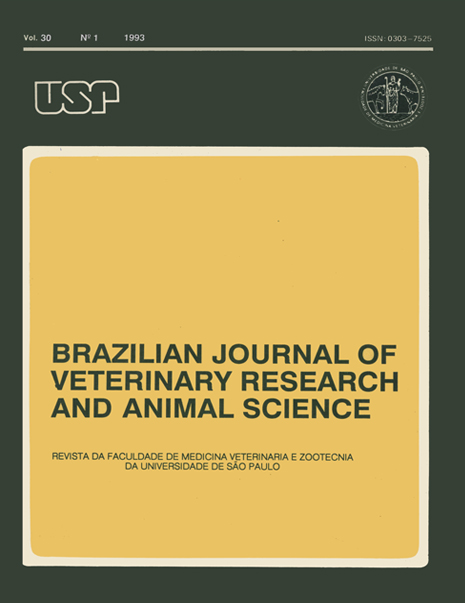Canine cutaneous leishmaniosis: soroepidemiological inquiry in urban and rural area of Uberlândia - Minas Gerais - Brazil
DOI:
https://doi.org/10.11606/issn.1678-4456.bjvras.1993.52013Keywords:
Leishmaniose tegumentar, Fluorescent Antibody Technique, Dogs, Uberlândia, BrazilAbstract
Starting from an outbreak of a human cutaneous leishmaniasis, we proposed to investigate the natural dog infection, in rural and urban area of Uberlândia, Minas Gerais, Brazil. The dog were submitted to clinical, hemoparasitological and sorological diagnosis (indirect fluorescent antibody reaction): from 429 domestic dogs examined, 100 from the rural area and 329 from the urban area. The indirect fluorescent antibody reaction showed that 1% of the dogs from the rural area and 10,6% of dogs from the urban area were reagent for Leishmania. These findings seem to indicate that the dog represents an important role as reservatory of the infection, contributing with dissemination and formation of new foci of the endemic disease in the urban area.
Downloads
Downloads
Published
Issue
Section
License
The journal content is authorized under the Creative Commons BY-NC-SA license (summary of the license: https://





